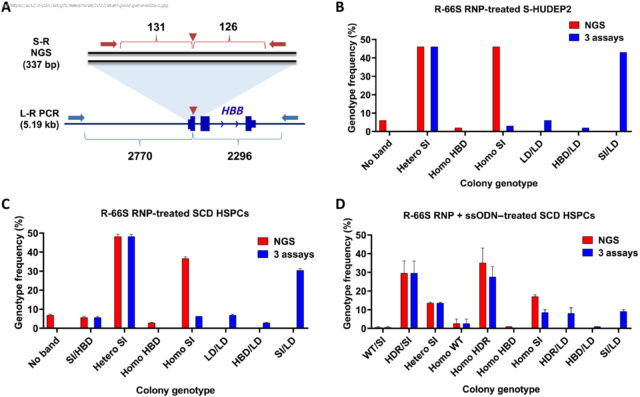A Rice University lab is leading the effort to reveal potential threats to the efficacy and safety of therapies based on CRISPR-Cas9, the Nobel Prize-winning gene editing technique, even when it appears to be working as planned.
A Rice University lab is leading the effort to reveal potential threats to the efficacy and safety of therapies based on CRISPR-Cas9, the Nobel Prize-winning gene editing technique, even when it appears to be working as planned.
Bioengineer Gang Bao of Rice’s George R. Brown School of Engineering and his team point out in a paper published in Science Advances that while off-target edits to DNA have long been a cause for concern, unseen changes that accompany on-target edits also need to be recognized—and quantified.
Bao noted a 2018 Nature Biotechnology paper indicated the presence of large deletions. “That’s when we started looking into what we can do to quantify them, due to CRISPR-Cas9 systems designed for treating sickle cell disease,” he said.
Bao has been a strong proponent of CRISPR-Cas9 as a tool to treat sickle cell disease, a quest that has brought him and his colleagues ever closer to a cure. Now the researchers fear that large deletions or other undetected changes due to gene editing could persist in stem cells as they divide and differentiate, thus have long-term implications for health.
“We do not have a good understanding of why a few thousand bases of DNA at the Cas9 cut site can go missing and the DNA double-strand breaks can still be rejoined efficiently,” Bao said. “That’s the first question, and we have some hypotheses. The second is, what are the biological consequences? Large deletions (LDs) can reach to nearby genes and disrupt the expression of both the target gene and the nearby genes.






